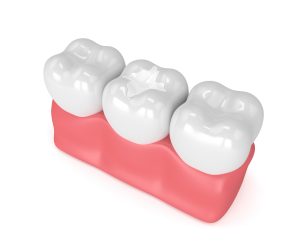Common Questions About Dental Sealants
August 5, 2022

Brushing and flossing aren’t the only ways to defend your child’s smile from tooth decay. Regular care from a dentist is equally important. Besides a cleaning and checkup, your children’s dentist may also recommend dental sealants. A thin coating is applied to the chewing surfaces of their molars, which are the most cavity-prone areas in children. This creates a protective barrier over their enamel to safeguard their back teeth from decay. Don’t worry if you have a few questions. Here are the answers you need to make the best decision for your little one’s smile.
Are Dental Sealants Effective?
Yes! Research has found that 80% of cavities can be prevented for 2 years after sealants are applied. 50% of sealants continue to combat decay for up to 4 years. If one is damaged or falls off, your pediatric dentist can replace it to restore your child’s protection against decay.
What age should children get sealants?
Most dentists recommend applying sealants after the permanent molars erupt around the age of 6. They should be reapplied when the 2nd molars come in at about 12 years old. Although sealants are often used for children, you’re never too old to benefit from their protection.
Does it hurt to get dental sealants?
There’s no need to worry about a painful procedure. Applying sealants is a quick, pain-free process that can be done at their routine cleaning and checkup. After the tooth is clean, a gel is placed on the surface to ensure a strong bond. The tooth is rinsed and dried before the clear sealant is painted on and dried using a special dental light.
What’s the average lifespan of a sealant?
Various factors affect the life expectancy of a sealant; however, they have been shown to last for up to 9 years after placement. It’s not unusual for them to fall off over time, which your child’s dentist will spot during their routine appointment, to have it replaced quickly.
Are dental sealants expensive?
Most dental insurances cover sealants for children, but every policy differs. They are often covered under preventive care after a co-payment. Your benefits can pay up to 100% of the cost to protect your child’s smile, even if money is tight.
Invest in Added Protection
Childhood tooth decay is the most prevalent chronic condition in the U.S. Cavities are more common in children than asthma. You can ensure your child’s smile doesn’t become another victim of decay through the power of prevention.
You can promore a cavity-free smile at home by encouraging a solid oral hygiene routine and a diet that’s limited in sugar. Don’t forget to schedule a cleaning and checkup every 6 months.
About Dr. Allen Pearson
Dr. Pearson achieved his dental degree from the Creighton University School of Dentistry and continued his education to earn his Pediatric Dental Specialty Certificate. He provides the compassionate care young smiles need through customized treatments. If you’re interested in adding dental sealants to your child’s oral health plan, contact our office today for an appointment.
